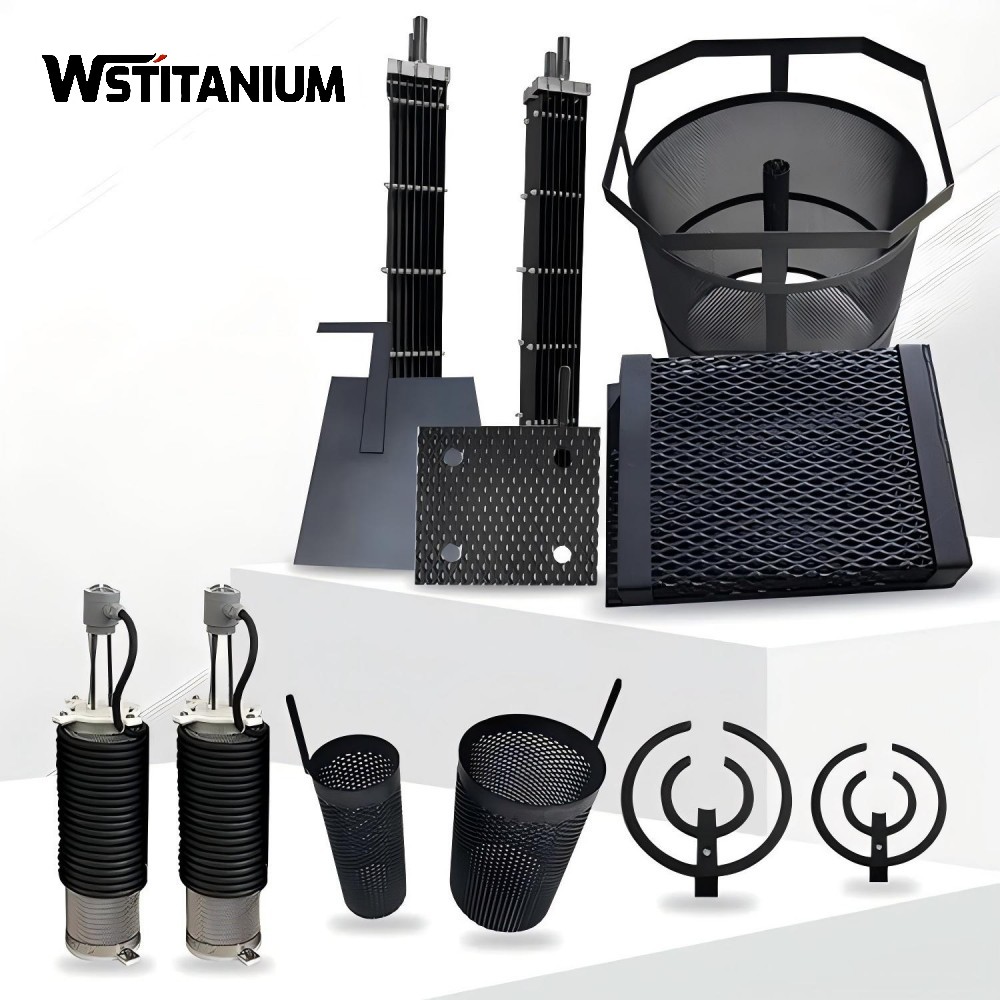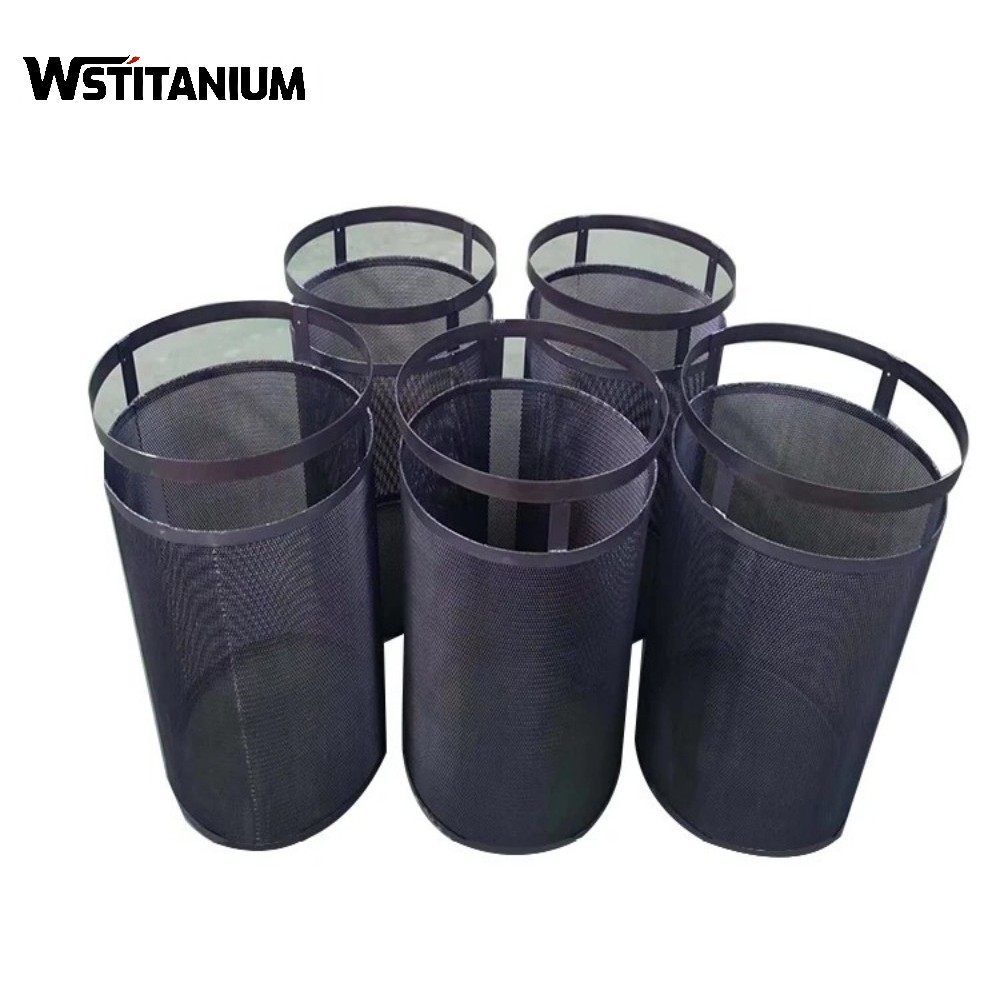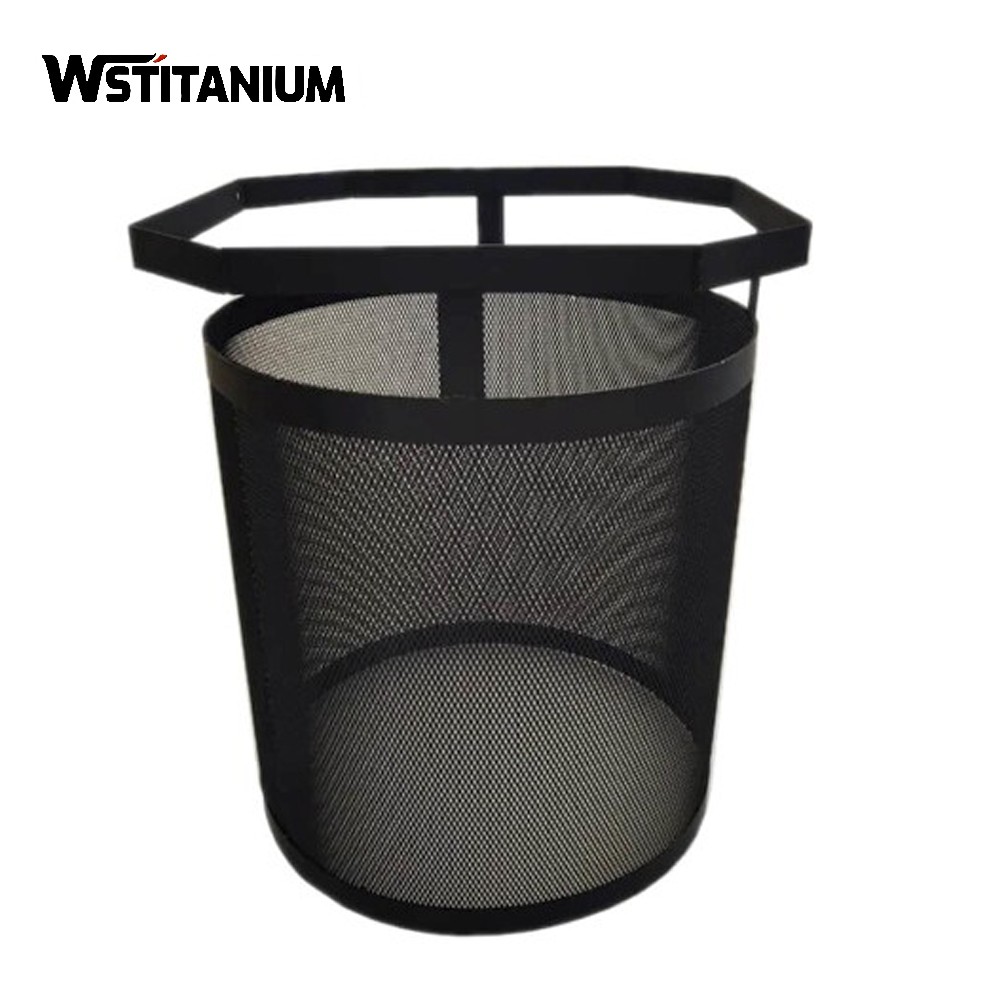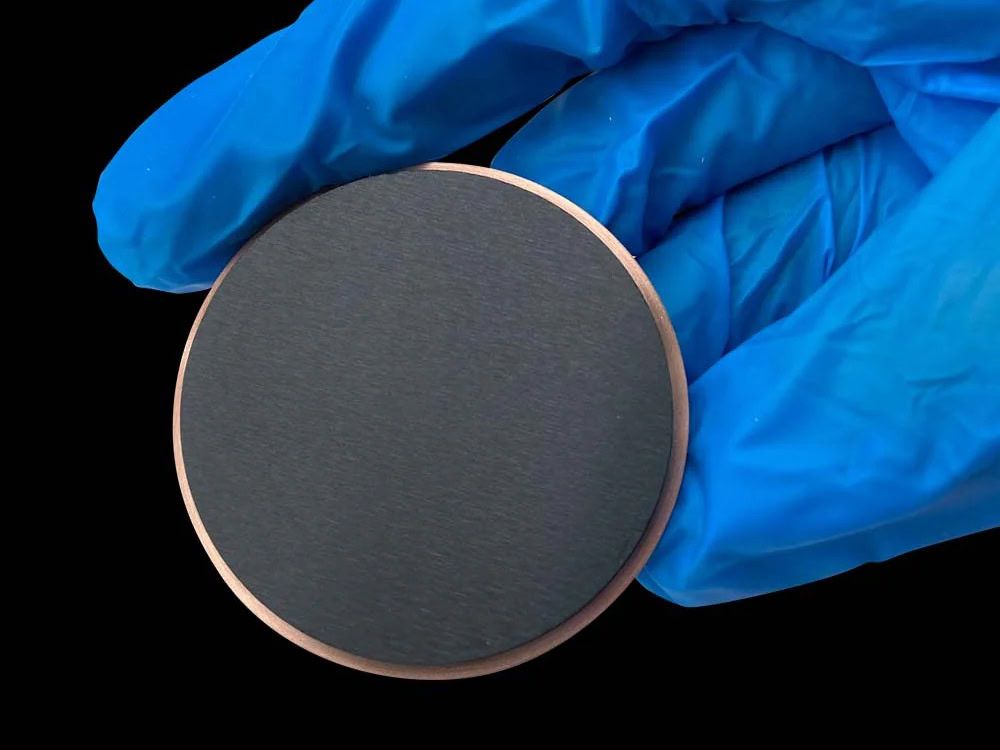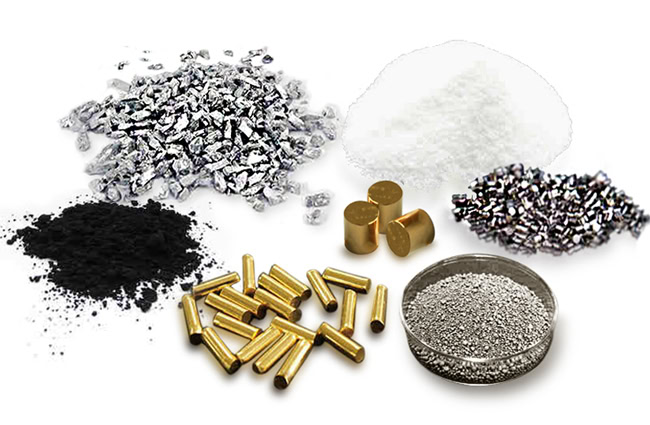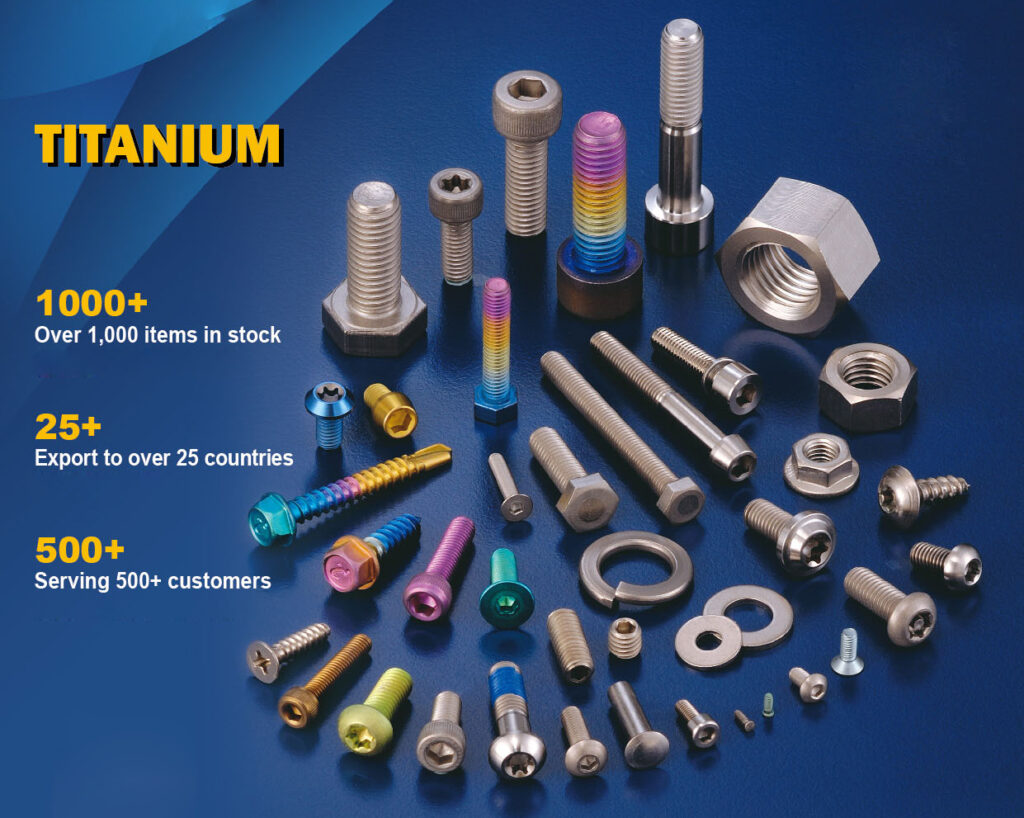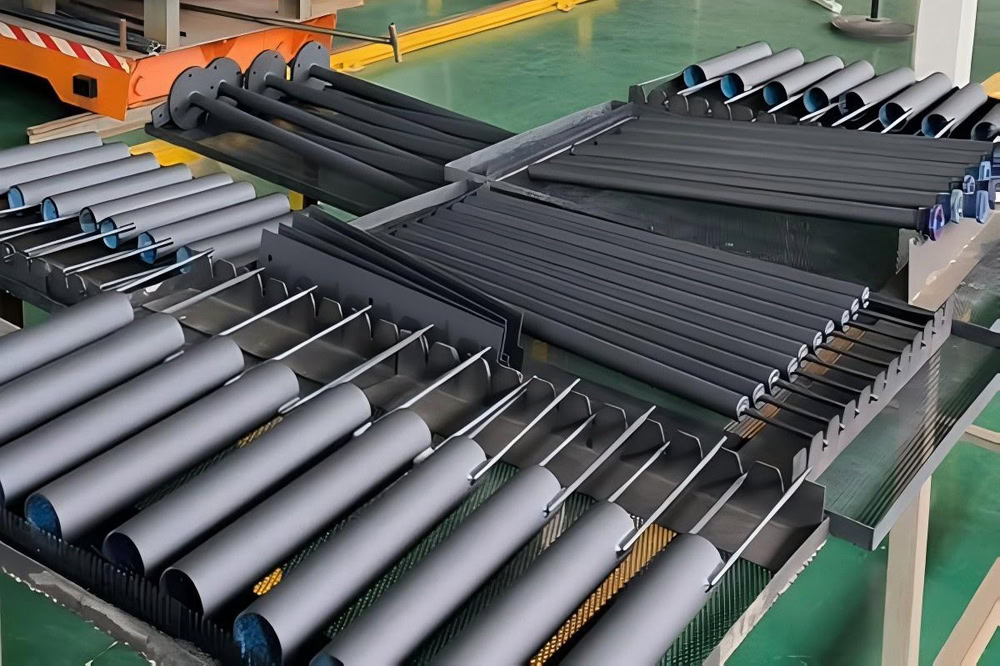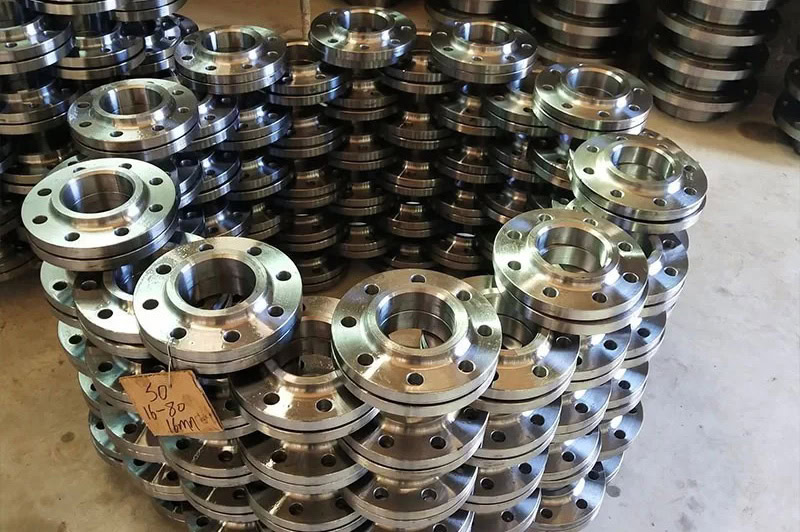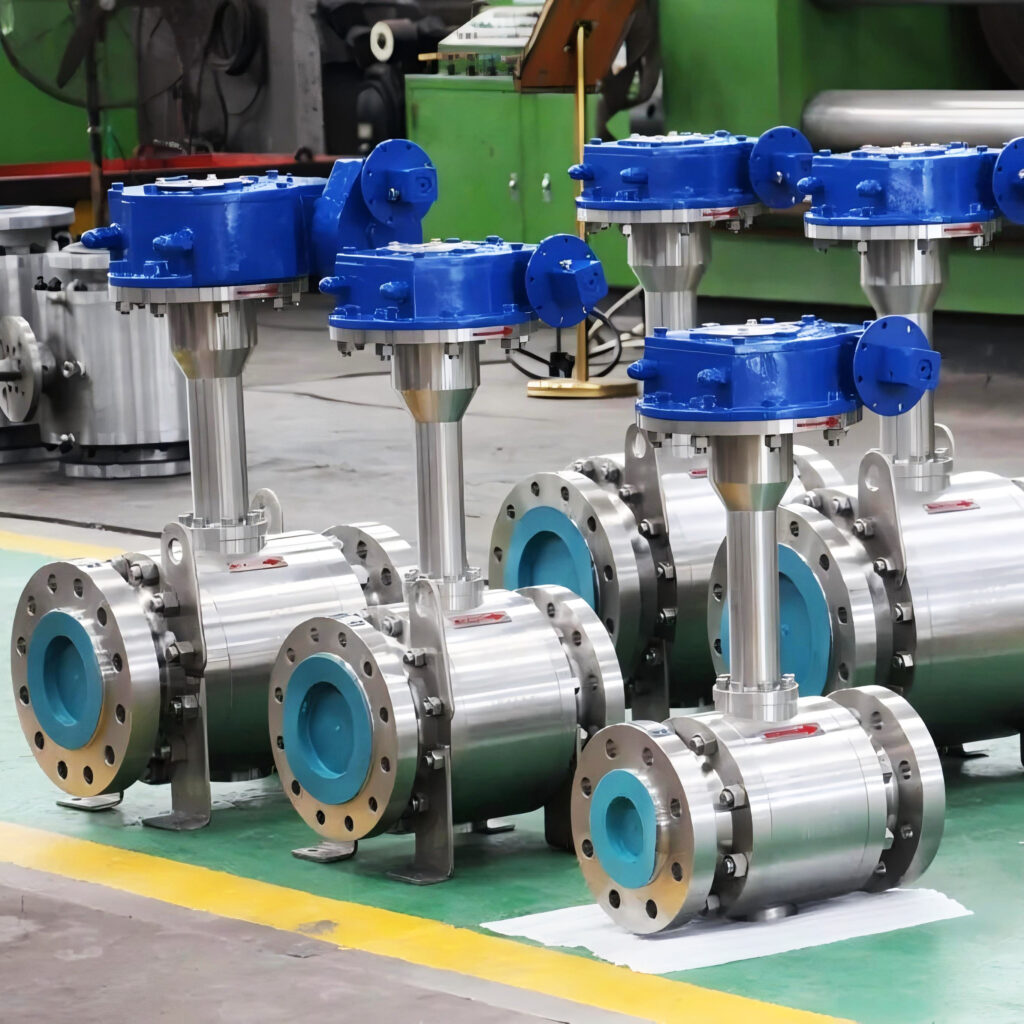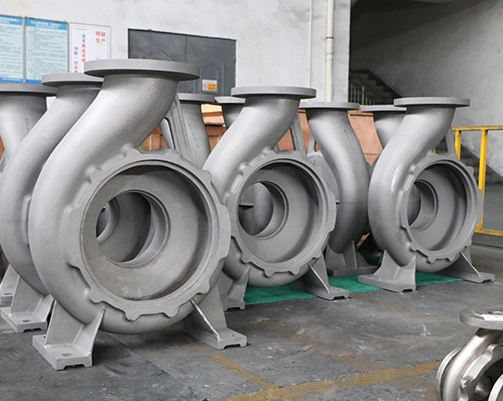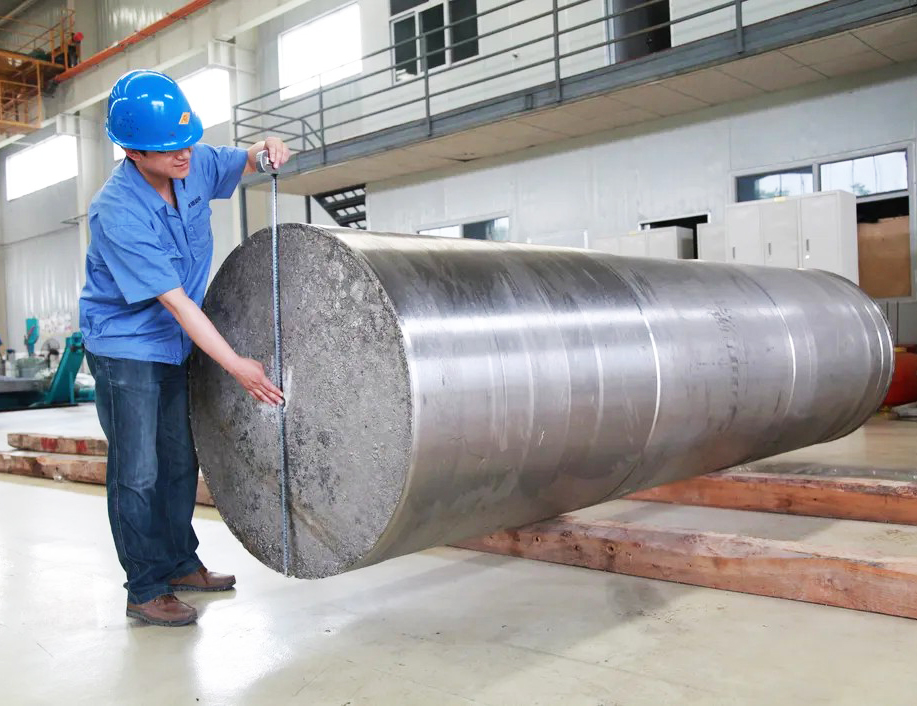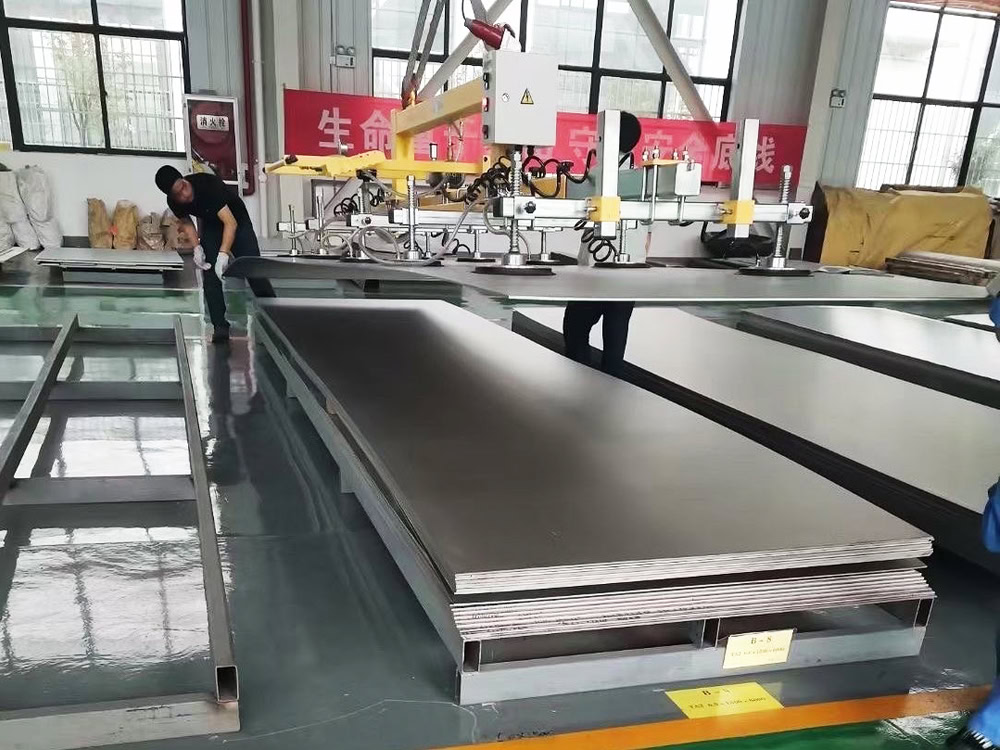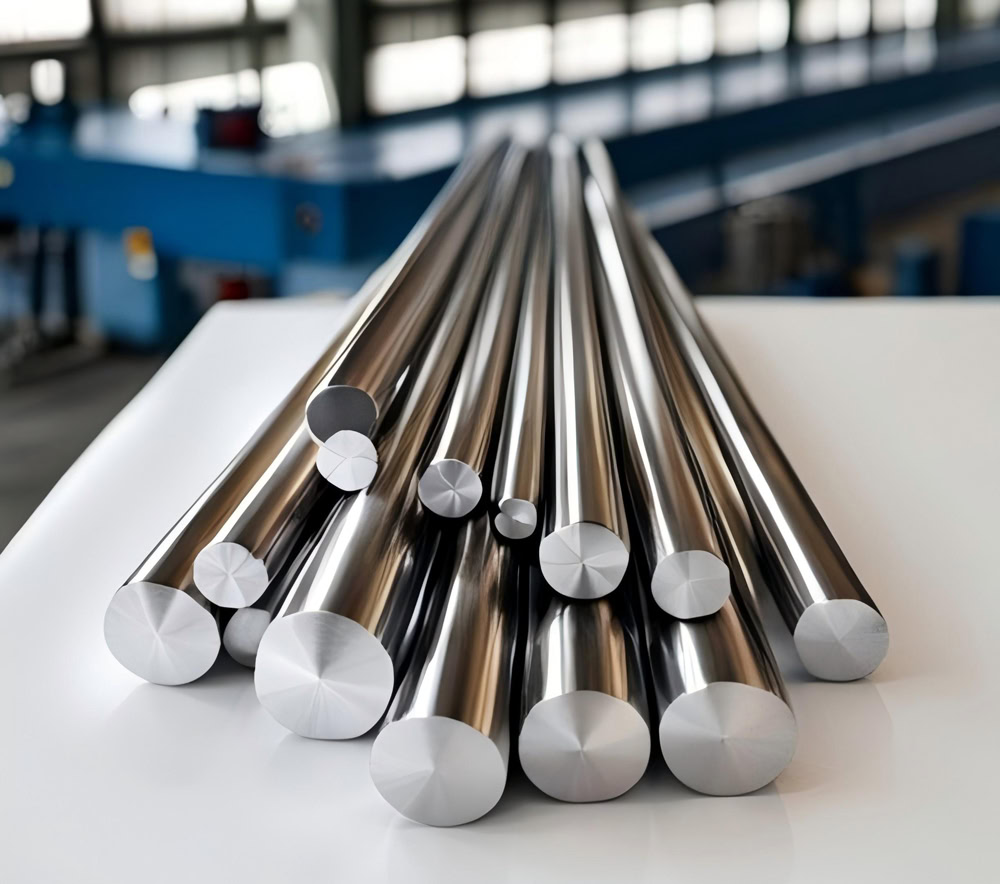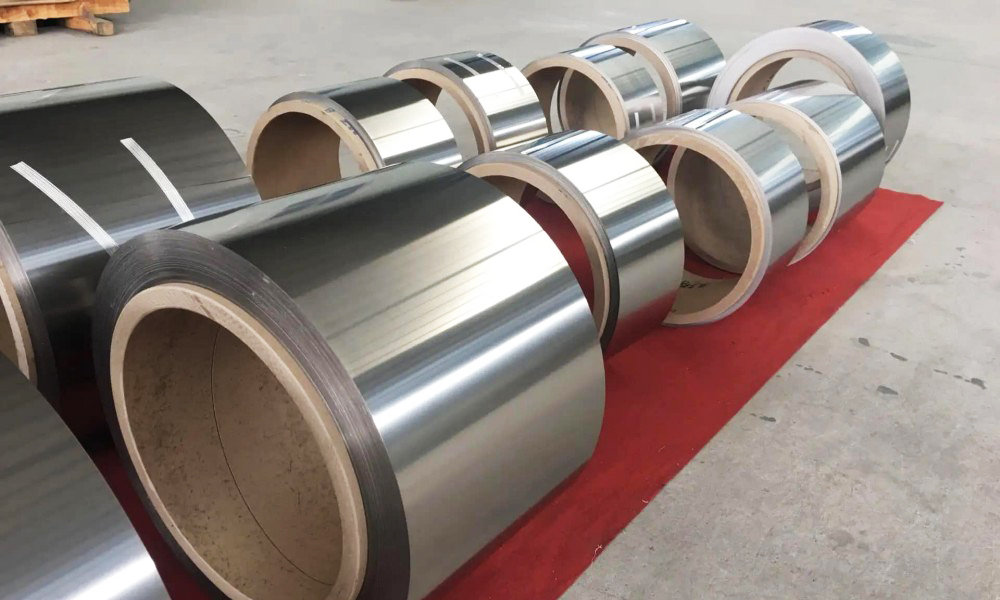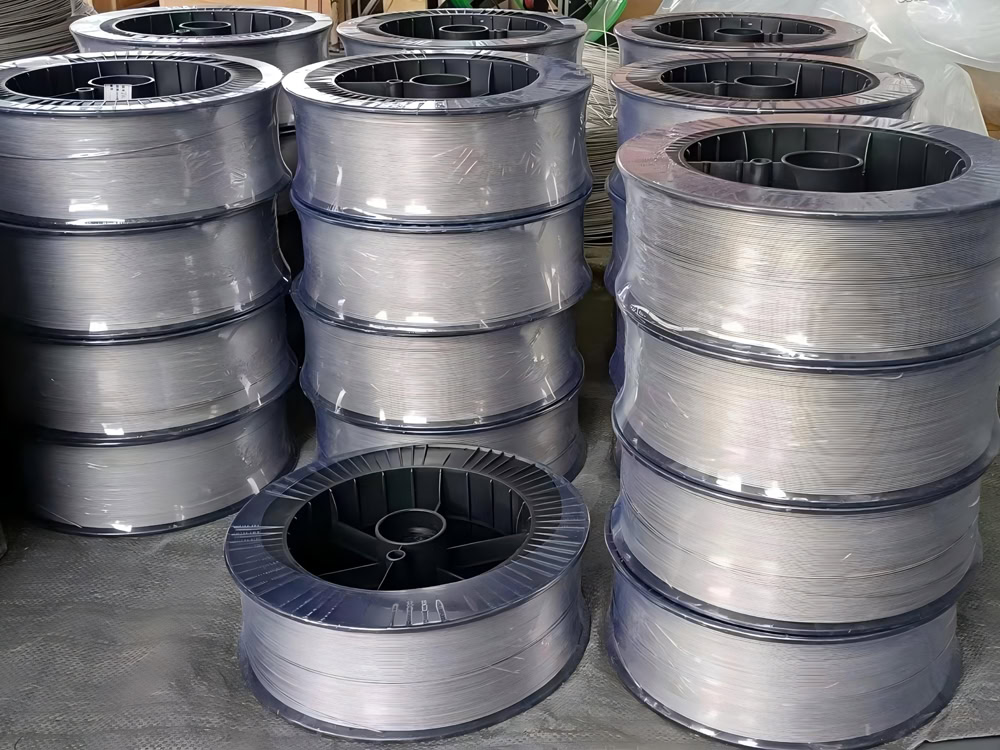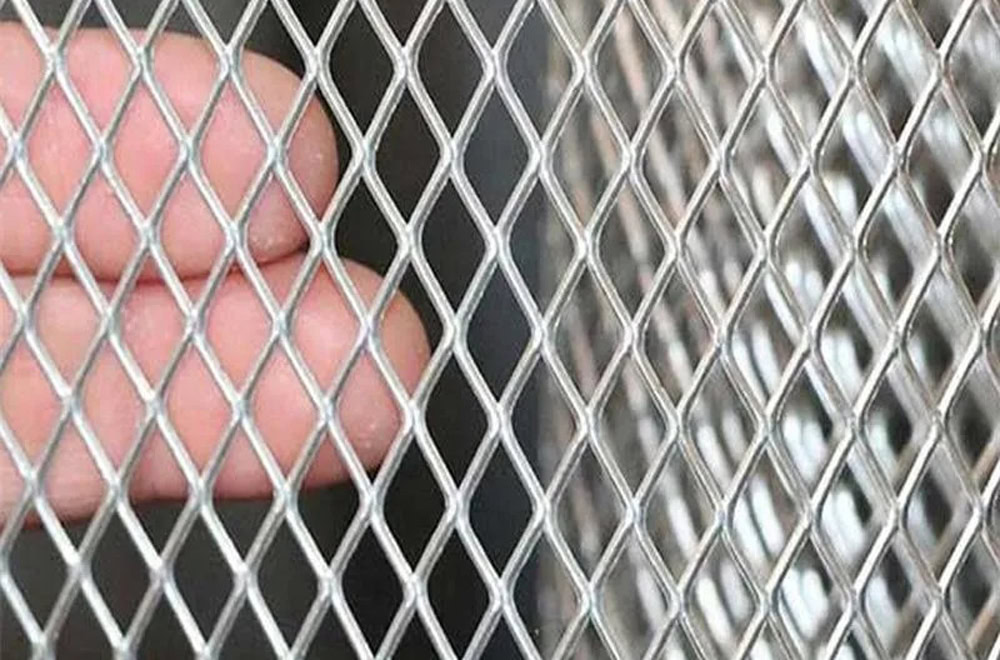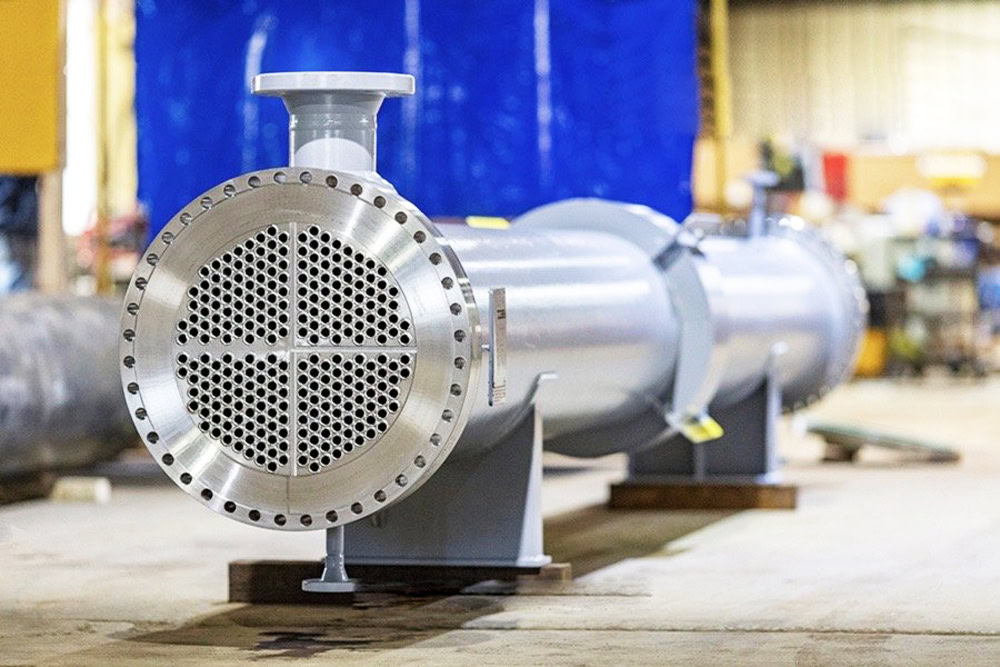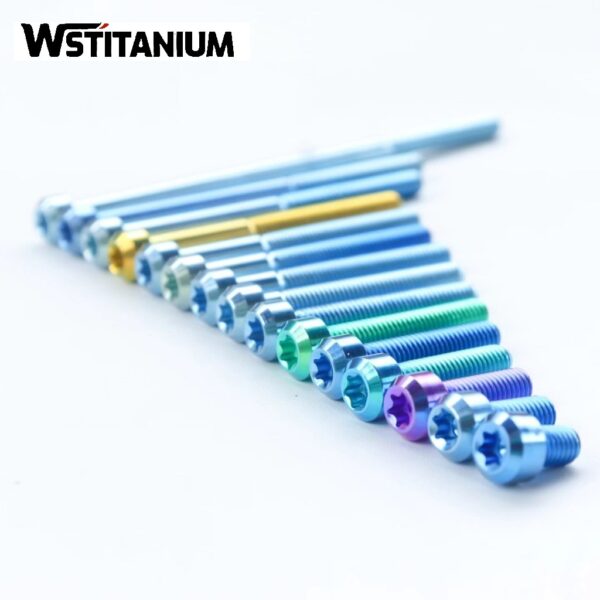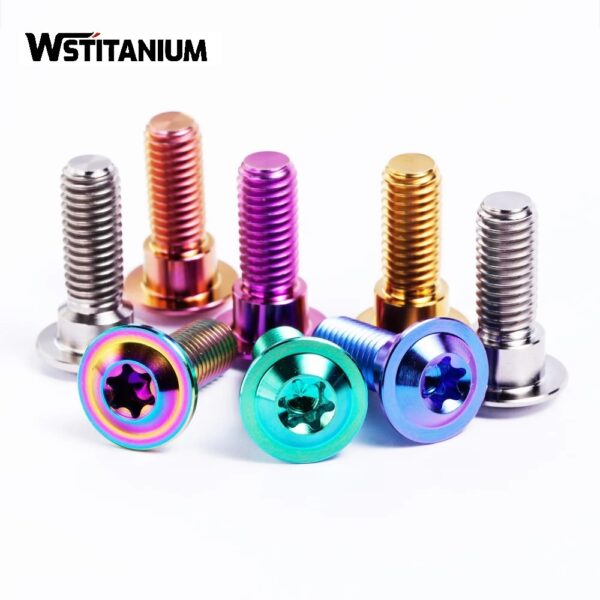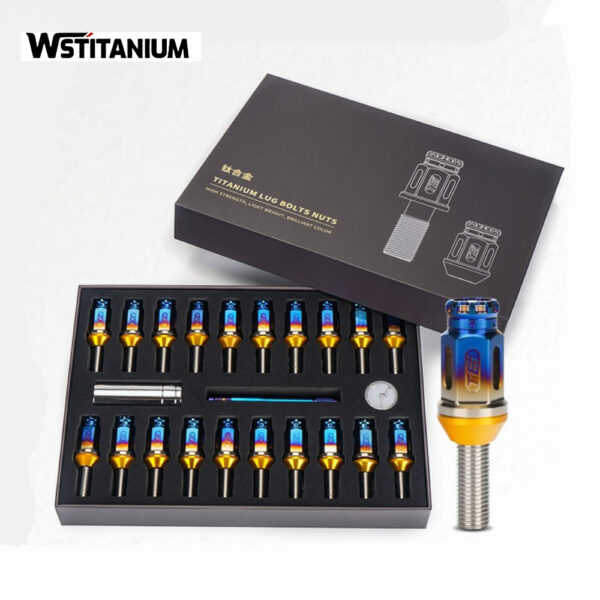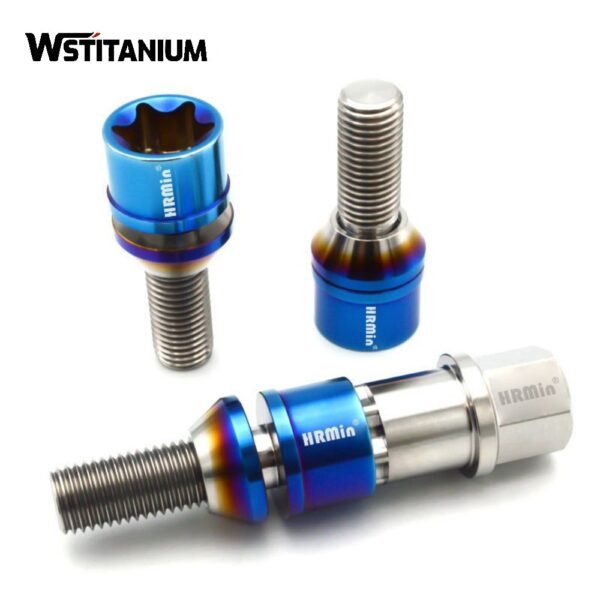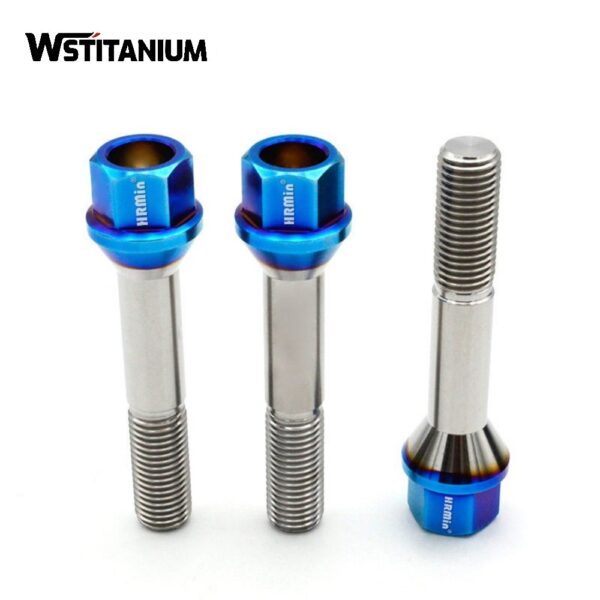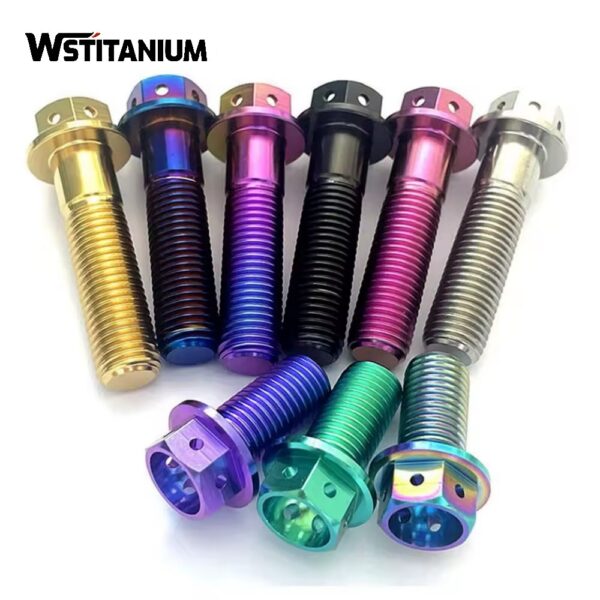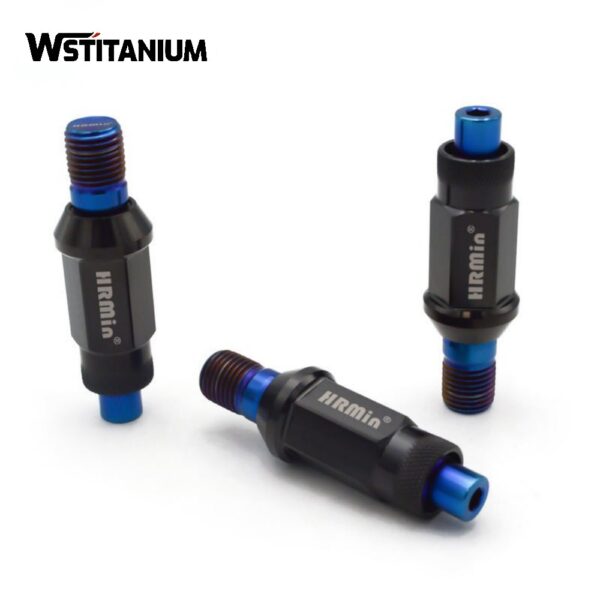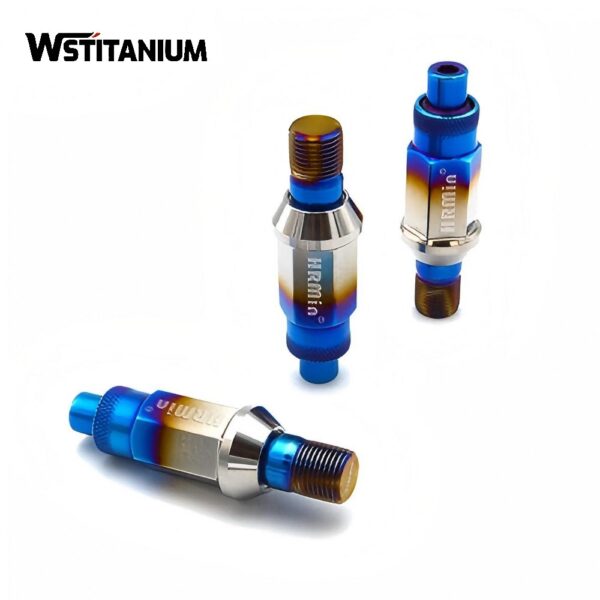MMO Titanium Anode For Aquaculture
Certified: CE & SGS & ROHS
Shape: Requested
Diameter: Customized
Drawings: STEP, IGS , X_T, PDF
Shipping: DHL, Fedex, or UPS & Ocean Freight

20+ YEARS EXPERIENCE SENIOR BUSINESS MANAGER
Ask Michin For What You Want?
Aquaculture is a key component of global food security. With increasing aquaculture density and scale, water pollution, frequent disease outbreaks, and ecological damage are becoming increasingly prominent. Against this backdrop, MMO titanium anodes (titanium-based metal oxide-coated anodes), with their unique electrocatalytic performance, chemical stability, and ecological compatibility, have become a core technological solution to addressing aquaculture’s challenges.
MMO titanium anodes, based on industrially pure titanium and coated with a mixed coating of precious metal oxides such as ruthenium, iridium, and tantalum, combine excellent conductivity, catalytic activity, and corrosion resistance. Known as “dimensionally stable anodes (DSA),” they offer significant advantages in low energy consumption, long life, and zero secondary pollution, making them particularly well-suited to the high-salinity, high-humidity, and highly corrosive environments of aquaculture. From precise disinfection in recirculating aquaculture systems (RAS) to deep purification of discharged wastewater, MMO titanium anodes provide key technical solutions for green and sustainable development.
| Technical Measurement | Performance |
| Coating Element | Iridium Oxide (IrO₂), Ruthenium Oxide (RuO₂),Platinum |
| Substrate Material | Titanium Gr1 or Gr2 |
| Titanium Anode Shape | Customized Plate/Mesh/Tube/Rod/Wire/Disc |
| Coating Thickness | 8~20 μm |
| Coating Uniformity | 90% min. |
| Current Density | ≤ 20000 A/m² |
| Operating Voltage | ≤ 24V |
| PH Range | 1~14 |
| Temperature | < 80 °C |
| Fluoride Ion Content | < 50 mg/L |
| Warranty | More than 5 years |
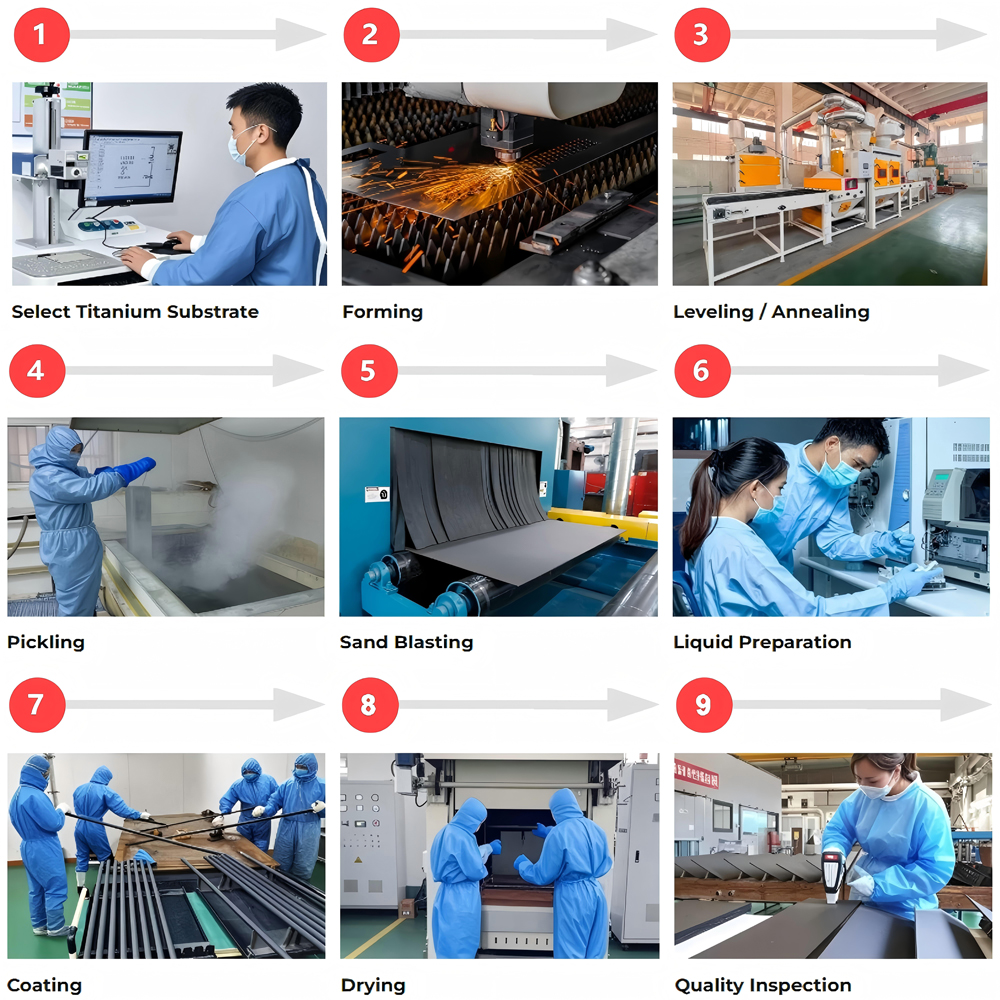
Aquaculture Pollution
Pollution generated by aquaculture is characterized by complex composition, continuous emissions, and far-reaching hazards. It primarily includes four core pollutants:
Organic pollution: Leftover bait, feces, and biological metabolites increase COD (chemical oxygen demand) in water bodies, which can easily lead to eutrophication and a sudden drop in dissolved oxygen.
Nitrogen and phosphorus pollution: The accumulation of ammonia nitrogen and nitrites not only damages the gill tissues of aquacultured organisms but also triggers blooms of harmful algae such as cyanobacteria and dinoflagellates, forming “red tides.”
Microbial pollution: The proliferation and spread of pathogens such as Vibrio and iridoviruses are major causes of aquaculture diseases. Traditional chemical disinfection can easily lead to increased antibiotic resistance in pathogens. The overuse of antibiotics can lead to excessive abundance of antimicrobial resistance genes (ARGs) in sediments.
Chemical pollution: Excessive use of disinfectants, antibiotics, and other chemical agents can leave residues in aquatic products and contaminate surrounding water bodies, reducing product quality and food safety.
MMO Titanium Anode Applications in Aquaculture
MMO titanium anodes are used across the entire aquaculture landscape, demonstrating irreplaceable advantages in high-value-added, intensive aquaculture.
Recirculating Aquaculture: In closed aquaculture systems for high-end fish like salmon and grouper, MMO titanium anodes are integrated into electrolytic disinfection modules to achieve real-time water purification and disease control, supporting aquaculture densities exceeding 45 kg/m³.
Seawater Cage Aquaculture: For large yellow croaker and abalone, MMO titanium anodes, coupled with mobile electrolysis equipment, can adapt to high-salinity environments and address disinfection challenges in offshore aquaculture. In freshwater aquaculture of whiteleg shrimp and California sea bass, MMO titanium anodes are used for ammonia nitrogen degradation and dissolved oxygen regulation.
Aquaculture Tailwater Treatment: In aquaculture tailwater discharge, MMO titanium anode systems can deeply remove pollutants such as organic matter, nitrogen, and phosphorus.
Working Principle of the MMO Titanium Anode
The MMO titanium anode achieves water purification and disease control through electrochemical action. Its core principles are based on three major mechanisms: electrocatalytic oxidation, in-situ disinfection, and pollutant conversion.
(I) Electrochemical Disinfection
When powered, the precious metal oxide coating on the surface of the MMO titanium anode exerts a highly efficient catalytic effect. In seawater with a salinity of 20‰ or higher, the coating catalyzes the oxidation of chloride ions (Cl⁻) to produce chlorine gas (Cl₂). This gas further reacts with water to produce hypochlorous acid (HOCl): 2Cl⁻ → Cl₂↑ + 2e⁻Cl₂ + H₂O → HOCl + H⁺ + Cl⁻.
Hypochlorous acid has strong oxidizing properties (redox potential (ORP) of up to 850mV) and can rapidly destroy pathogen cell membranes and nucleic acid structures, achieving a 99.99% kill rate against Vibrio spp. In freshwater environments, the anode primarily produces reactive oxygen species (ROS) such as oxygen and hydroxyl radicals (·OH), which inactivate microorganisms through oxidation.
(II) Electrocatalytic Degradation
The high catalytic activity of the MMO titanium anode activates water molecules and dissolved oxygen in the water, generating a large number of highly reactive oxidizing species (such as ·OH and O₃). These species indiscriminately attack organic molecular chains, breaking down complex organic matter in leftover bait and feces into CO₂ and H₂O. They also oxidize ammonia nitrogen into harmless nitrates and nitrites into nitrates.
(III) Water Quality Regulation
The trace hydrogen and hydroxide ions produced during electrolysis help regulate water pH, maintaining a suitable acid-base environment for aquaculture. Furthermore, the tiny bubbles generated by the anode reaction increase the dissolved oxygen content in the water, improving the living environment for aquaculture organisms.
MMO Titanium Anode Types
Based on the water quality characteristics, treatment objectives, and equipment requirements of aquaculture applications, MMO titanium anodes are primarily categorized into the following four types, each with its own distinct coating formulation and structural design:
(I) Ruthenium-Iridium Titanium Anodes
This type of anode uses ruthenium-iridium oxide as its core catalytic component, combining excellent chlorine evolution performance with excellent electrical conductivity. Its key advantage lies in its high catalytic efficiency in high-salinity environments, making it suitable for applications such as seawater cages and industrialized seawater aquaculture. In 3.5% salinity seawater, it can stably output effective chlorine at a voltage of 2.5V, with a coating loss rate of only 2mg/A.a. Common configurations include mesh and tubular forms, making them easy to integrate into circulating water filtration systems.
(II) Iridium-Tantalum Titanium Anodes
Tantalum oxide enhances coating stability, enabling use in diverse media environments, including freshwater, brackish water, and seawater. Its outstanding feature is its exceptional corrosion resistance. It maintains a disinfection efficiency exceeding 98% even in continuous operation in turbid seawater with a sand content of 2.8kg/m³. After 5000 hours of accelerated corrosion testing, the coating loss rate was only 0.07μm/year. Ribbon-shaped iridium-tantalum anodes (e.g., 6.35mm wide and 0.635mm thick) are widely used in freshwater aquaculture tailwater treatment.
(III) Rod MMO titanium anodes
Specifications range from 3.2mm to 25mm in diameter. In seawater environments, a 12.7mm diameter rod-shaped anode has a rated output current of up to 22.0A/m, making it suitable for distributed disinfection units on mobile electrolysis vessels. In freshwater environments, the same specification has a rated output current of 10.6A/m, making it suitable for fixed-point water quality control in pond aquaculture.
(IV) Mesh MMO titanium anodes
Using a titanium mesh substrate coated with a precious metal oxide coating, they feature a large surface area and uniform current distribution, significantly improving electrolysis efficiency. In the three-stage purification system of a recirculating aquaculture system, the mesh anode serves as the primary electrolysis unit, efficiently removing large organic molecules. Combined with the subsequent catalytic and slow-release modules, it achieves a water recycling rate of 95%. Its customizable mesh size and dimensions adapt to water treatment equipment with varying flow rates.
Related products
-
Titanium Fasteners
Anodized Titanium Screws
-
Titanium Fasteners
Titanium Fasteners For Bicycles
-
Titanium Fasteners
Custom Gr5 Titanium Fasteners
-
Titanium Fasteners
Titanium Screws and Bolts
-
Titanium Fasteners
Titanium Wheel Bolts
-
Titanium Fasteners
Colored Motorcycle Titanium Bolts
-
Titanium Fasteners
Colored Gr5 Manifold Titanium Bolts
-
Titanium Fasteners
Burnt Titanium Wheel Bolt
